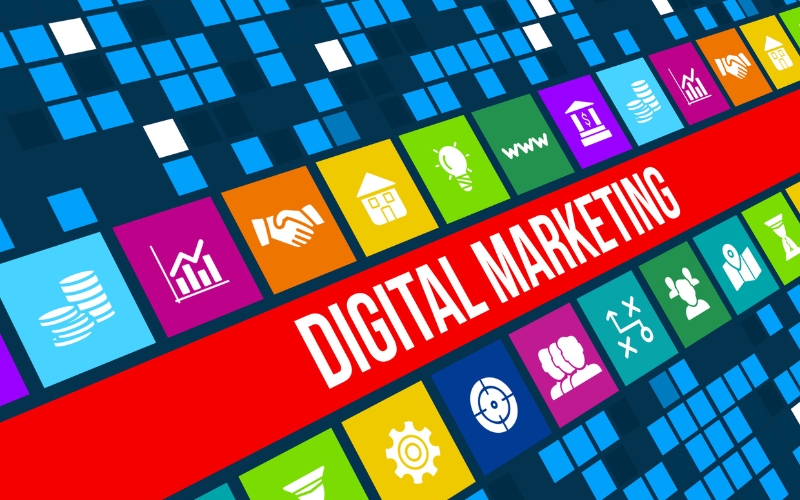
In today’s competitive digital landscape, building a scalable digital marketing strategy is essential for any business looking to expand its online presence and achieve sustained growth. Understanding the foundational elements of digital marketing—SEO, content marketing, paid advertising, social media, and email marketing—enables companies to create a dynamic approach that not only attracts traffic but also converts leads into loyal customers. By focusing on these core components and integrating them effectively, businesses can ensure that their marketing efforts evolve as their company scales.
Understanding the Foundations of Digital Marketing

A scalable digital marketing strategy forms the backbone of any successful online business. To build a strategy that grows with your business, it’s essential to understand the core components of digital marketing and how they work in harmony. These components include SEO (Search Engine Optimization), content marketing, paid advertising, social media, and email marketing.
SEO is the foundation of any online marketing effort, focusing on optimizing your website to rank higher on search engines like Google. By using targeted keywords and improving user experience, SEO helps businesses increase organic traffic over time. When combined with a scalable digital marketing strategy, SEO allows businesses to reach a larger audience as they expand, without relying solely on paid methods.
Content marketing is equally important, as it serves to engage and educate your audience. It involves creating blog posts, videos, infographics, and other content types that address the needs and interests of your target market. High-quality, evergreen content supports a scalable digital marketing strategy by driving traffic long after it’s published, generating continuous interest without constant manual effort. Additionally, content marketing works synergistically with SEO to boost organic search rankings.
Paid advertising, often in the form of Google Ads or social media ads, is an excellent way to accelerate your marketing efforts. While organic traffic takes time to build, paid ads provide an immediate return, driving targeted traffic quickly. In a scalable digital marketing plan, paid campaigns can be adjusted in real-time to ensure you’re getting the most out of your budget, reaching more potential customers as your business scales.
Social media platforms like Facebook, Instagram, LinkedIn, and Twitter allow businesses to connect with their audience, share content, and build brand awareness. Social media marketing is an essential tool for fostering engagement and driving traffic to your website. As part of a scalable digital marketing strategy, social media allows brands to grow their audience exponentially, leveraging viral content, paid ads, and influencer partnerships to expand reach effectively.
Finally, email marketing plays a crucial role in nurturing leads and converting them into customers. It involves creating personalized messages that resonate with your audience, offering valuable information, promotions, or incentives. As part of a scalable digital marketing plan, email campaigns can be automated, ensuring continued engagement as your business grows and your contact list expands.
By combining these elements, businesses can create a well-rounded, scalable digital marketing strategy that evolves with their needs, reaching broader audiences and generating sustained growth over time.
Setting Clear, Measurable Goals for Growth

When developing a scalable digital marketing strategy, setting clear and measurable goals is essential for guiding your efforts and ensuring consistent growth. The SMART framework—Specific, Measurable, Achievable, Relevant, and Time-bound—provides a structured approach to goal-setting that helps businesses track progress, make adjustments, and scale effectively.
Specific goals provide clarity and focus, ensuring that all efforts are aligned with your business objectives. For example, rather than aiming to “increase website traffic,” a more specific goal would be “increase website traffic by 25% within the next six months.” This clarity makes it easier to design campaigns that directly support your growth.
Measurable goals allow you to track your success, making it possible to assess whether your scalable digital marketing strategy is on track. Key performance indicators (KPIs) such as traffic, engagement rates, and conversion rates can serve as measurable goals. For instance, a goal of “improve email click-through rates by 10%” gives you a concrete metric to monitor and adjust your tactics as needed.
Achievable goals take into account your resources, capabilities, and timeline. It’s important to set goals that challenge you but remain realistic. If you set an overly ambitious goal, such as “double revenue in one month,” you may become discouraged if the target isn’t met. Instead, breaking down long-term goals into smaller, more achievable steps will make the process feel more manageable and maintain momentum in your scalable digital marketing efforts.
Relevant goals ensure that your objectives align with the bigger picture. For example, a goal to “expand brand awareness in new regions” makes sense if your long-term vision is national or global growth. It’s important to ensure that each goal you set moves you closer to your overarching business aspirations, especially as you develop a scalable digital marketing strategy that will evolve over time.
Finally, time-bound goals set deadlines, creating urgency and helping you prioritize your tasks. For example, a goal to “boost conversions by 15% within three months” ensures that all efforts are focused on achieving that result within a defined timeframe. By setting time-bound goals, you can break down your scalable digital marketing strategy into actionable steps and evaluate performance against your expectations.
Incorporating SMART goals into your scalable digital marketing strategy will give your business the roadmap it needs to grow in a structured, efficient manner, ensuring that each milestone is celebrated and that the overall strategy remains aligned with your long-term vision.
Leveraging Automation and Technology for Efficiency

One of the key elements of a scalable digital marketing strategy is the effective use of automation and technology. As your business grows, manually managing marketing tasks becomes impractical, and that’s where automation tools come in. By leveraging technology, businesses can streamline their marketing processes, improve efficiency, and scale efforts without sacrificing quality or consistency.
Content scheduling tools are a crucial part of a scalable digital marketing strategy. Platforms like Hootsuite, Buffer, and Sprout Social allow marketers to schedule content in advance, ensuring that posts are published consistently across social media channels. This automation not only saves time but also allows businesses to maintain an active online presence without the need for constant manual input. As your business expands, you can scale your content output and reach a wider audience while still maintaining control over the content calendar.
Another vital automation tool for scaling a digital marketing strategy is lead nurturing software. Tools such as HubSpot, Marketo, and ActiveCampaign help businesses automate communication with leads, ensuring that no potential customer is left behind. Through automated workflows, these platforms can send personalized follow-up emails, targeted offers, or educational content at the right time in the customer journey. This not only improves conversion rates but also allows businesses to nurture relationships with prospects on autopilot, making it easier to scale without overwhelming the marketing team.
Social media management tools like Buffer, SocialBee, and Agorapulse help streamline social media marketing efforts, allowing businesses to schedule posts, track engagement, and analyze performance all in one place. Automation ensures that social media campaigns are consistently executed, even as your company expands into new markets or diversifies its content strategy. These tools help businesses save time and effort while still engaging with their audience effectively, making them a cornerstone of any scalable digital marketing strategy.
Email marketing automation tools such as Mailchimp, ConvertKit, and Drip allow businesses to send personalized email sequences to large audiences without having to send each email manually. By automating email campaigns, businesses can maintain regular communication with their audience, offering valuable content, promotions, and updates. As part of a scalable digital marketing strategy, email automation helps to convert leads into customers and maintain customer loyalty as the business grows.
By incorporating automation tools into your marketing mix, you can ensure that your scalable digital marketing strategy remains efficient and effective, even as your business grows. These tools allow you to scale your marketing efforts while maintaining a high level of personalization, ensuring that each customer receives the attention they deserve.
Creating Content That Resonates with Your Target Audience

To develop a scalable digital marketing strategy, one of the most important factors to consider is the ability to create content that resonates with your target audience. Understanding your audience’s needs, desires, and pain points allows you to craft content that speaks directly to them, building stronger connections and improving engagement. The key is to create valuable, relevant content that can be scaled to reach a larger audience without compromising quality.
The first step in creating effective content is conducting thorough audience research. This includes understanding demographic details like age, location, interests, and behaviors, as well as psychographic factors such as values, lifestyle, and motivations. With this knowledge, you can tailor your content to address the specific challenges your audience faces, making your message more compelling and engaging. By consistently providing content that resonates with your audience, you lay the foundation for a scalable digital marketing strategy that grows with your business.
Content comes in many forms, and to effectively scale your efforts, you need to focus on content types that can be reproduced and adapted for different platforms and purposes. For instance, blog posts are one of the most scalable content forms because they can be updated, repurposed, and shared across multiple channels. By creating comprehensive, evergreen content that provides long-term value, you ensure that it continues to drive traffic and engagement well into the future. A scalable digital marketing strategy relies on producing a library of blog posts that remain relevant, attract new visitors, and can be shared via email, social media, and search engines.
Videos are another highly engaging and scalable content type. With the rise of video consumption on platforms like YouTube, Instagram, and TikTok, creating short and informative videos is an excellent way to expand your reach. Videos can be repurposed into blog posts, social media snippets, or even infographics. By maintaining a consistent video production schedule and leveraging platforms with large audiences, you can scale your content marketing strategy significantly, ensuring that your messaging resonates with a wider audience.
Infographics are another scalable form of content that can break down complex information into visually appealing and easily digestible formats. Infographics can be shared across social media, included in blog posts, and repurposed into email marketing campaigns, providing maximum value from a single creation.
By focusing on creating diverse, scalable content types—like blog posts, videos, and infographics—you ensure that your scalable digital marketing strategy is not only effective in reaching your target audience but also flexible enough to grow with your business, adapting to new channels and larger audiences as needed.


